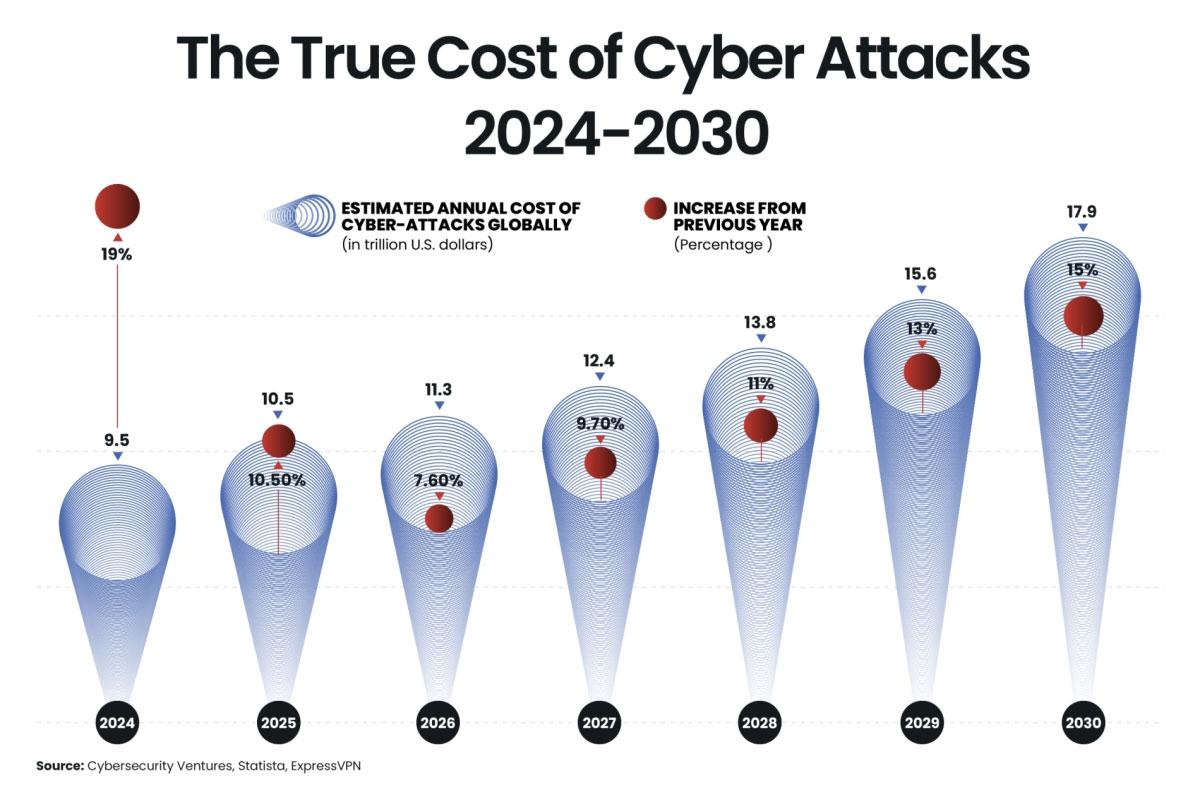Costing trillions - how AI is increasing the pain of cyber-attacks

In 2023, cyber-attacks from data breaches to hostile account takeovers were estimated to have cost $8tn globally.
This year, that is expected to rise to $9.5tn, as reported by research company Cybersecurity Ventures. The rise of AI technology is likely push this even higher, almost doubling in the next six years.
A survey conducted from 2018-23 with industry leaders by Statista revealed that cyber-attacks are one of the biggest threats to business, with a third saying such incidents were now their top concern.
Cyber-threats such as data breaches, identity theft, and fraudulent transactions lead to financial losses, invasions of privacy, and long-lasting consequences.
This is a cat-and-mouse game of vast expense. Both attackers and defenders constantly develop new tools and techniques to outwit one another, while geopolitics and economic conditions can influence the frequency and nature of cyber-attacks. This can make cost predictions complex.
While data breaches represent a significant aspect of the cyber-threat landscape, the scope of cyber-attacks extends much further. Globally, the Middle East retained its position as the second-most affected region, with an average data breach cost of $8m, an increase of 8.2% from 2022.
***

- Art
- Causes
- Analysis
- Cloak & Dagger
- Economy - Finance
- Health
- Literature
- Music
- Other
- News & Politics
- Real Time Facts
- Sports



